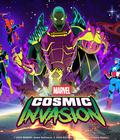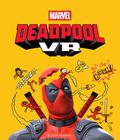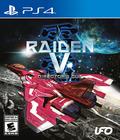Many of the franchises that helped popularize the shoot-'em-up are long gone. The R-Type series called it a day during the PS2 era, while Konami's near-absence from video games means that the Gradius series will be dormant as well. Raiden, however, lives on through various spin-offs and side stories, with every console generation receiving at least one entry. That continues with Raiden V: Director's Cut, an enhanced version of the Xbox One game that came out one year ago.
The game feels like a mix of traditional shooter elements with some "bullet hell" staples thrown in. You start by choosing between one of three ships, each with different statistics and primary shots. From there, you choose which one of the laser, plasma and vulcan shots you want to fire, and each has three variations. You go into battle with three bombs at your disposal, and you pick up colored crystals to power your weapon while facing hordes of enemies and giant bosses that fire intimidating bullet patterns. Unlike most bullet hell shooters, your ship doesn't contain one fatal spot, so you can't weave in and out of a hail of fire by letting bullets pass through most of your body.
There are some interesting changes added to the core mechanics that make it stand out among other bullet hell titles, so it's more enjoyable for both genre newcomers and veterans. Continues are infinite, so you can power through the game without having to constantly replay the early stages to earn continues. The game also has a life system where the number of hits you can take is determined by the armor rating of your ship. Each hit you take lets your ship do a loop; during that time, you can't attack but can't be immediately hit by a bullet, either. The tradeoff is that you only have one life, so you'll have to use a continue when you finally blow up. You lose your score when you continue, but all of the weapon power levels will carry over, so you aren't always fighting with an underpowered pea shooter. While all of that sounds like they'll make the game easier, the story mode features multiple paths and endings, so completionists will play through the campaign multiple times to experience them all. The stages are quite long, so the save feature is a nice option for those who aren't expecting to spend at least an hour on one run.
Another new mechanic that proves to be interesting is the Cheer. On the surface, it looks like another name for the super meter, which fills up over time and lets you increase your firepower by calling on small partner planes to help you out for a while. You'll always hit milestones, which are broadcast to all players while your system is online. They'll be small things, like hitting a point threshold, finding a secret character buried in the environment, or collecting a certain number of medals from enemies for points. Those milestones can then be cheered on by others, and that, in turn, lets you power up the meter faster or store it for a quick meter boost later. The mechanic is interesting, since you'll also be cheering others while you play, but don't expect too many boosts to come your way since the more dedicated players are likely too engrossed with high-level play.
Since the game is presented in a vertical mode, the developers have done some really good things with the rest of the space, so it doesn't seem wasted. The left side of the screen is more useful, as you're given a ton of information in addition to weapon power levels, shield health, and point multiplier. One screen can give you a graph of your point pace for that section against the best score for the stage and you'll also see the average of the top 100 players. Another screen will give you lots of personal stats, like how many bombs you've deployed or your hit percentage against the enemy. It's a very good thing that this type of information is available, but with so many enemies on-screen at one time, you may never have a chance to see any of it.
The right side of the screen is fascinating for the fact that it keeps a running log of the story. A first for the series, the game sports a narrative that goes beyond opening and ending cut scenes, as both the captain and intelligence officer are constantly conversing with your silent protagonist, each other, and other people you encounter while you're fighting. There's nothing memorable about the story or the characters, as you come across tropes like a treacherous weapons engineer and a sky pirate. Even if you were interested in the tale, you'd be hard-pressed to hear anything, as the sound effects and the soundtrack of rock and orchestral music drown out any dialogue.
With all of the positive things that accompany the series' tight gameplay mechanics, the one element that does need some work is bullet visibility. Part of that comes from the various camera zoom levels used throughout the game, as bullets can change size and speed. You may be dealing with a slow volley at first, but the next moment, those same ships will dole out fire at a much faster pace due to the camera zooming in. The other factor that makes bullets a pain to deal with is the lack of distinction. There's no real indicator that separates them from some of the background elements, so you'll often be surprised that something hit you. This is especially true when your own plasma weapons snake around the stage and cover some enemy fire or the clouds hide them from you.
There are only two main differences when compared to the original Xbox One release. The first is the inclusion of two extra levels in the Story mode. While that sounds exciting, they're more like bonus stages where you constantly shoot at a ship for bonus points. Since deaths don't matter except for a loss of specific bonuses, the extra levels are a decent distraction before you return to the branching storyline. The other difference is much bigger, as co-op play returns to the series. It was a strange omission in the original Raiden V, since the series has always supported co-op play. While this is still restricted to local play, it's welcome for shooter fans who don't like going solo all the time.
Raiden V: Director's Cut is a fine shooter. While it introduces some things to keep rookies engaged, it also has enough to keep veterans playing thanks to multiple routes and plane configurations. There's a limited selection of shooters for the bullet hell crowd to enjoy, and despite its issues with bullet visibility, Raiden V deserves a place in that library.
Score: 7.5/10
More articles about Raiden V: Director's Cut










 The Raiden series is one of the original trailblazers in the arcade shoot 'em up genre, with a rich 27-year history of high intensity bullet-dodging action.
The Raiden series is one of the original trailblazers in the arcade shoot 'em up genre, with a rich 27-year history of high intensity bullet-dodging action.









